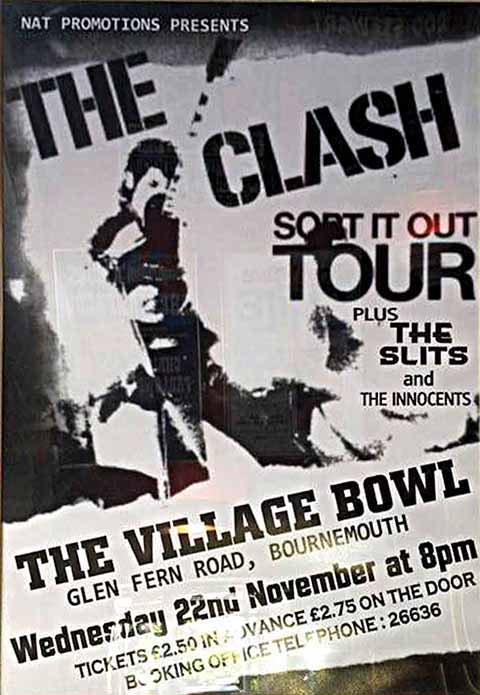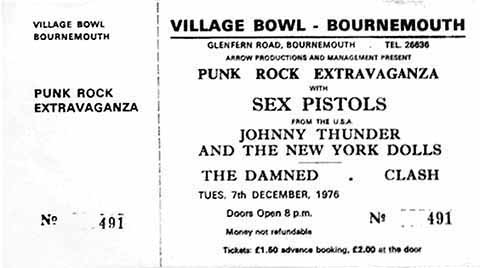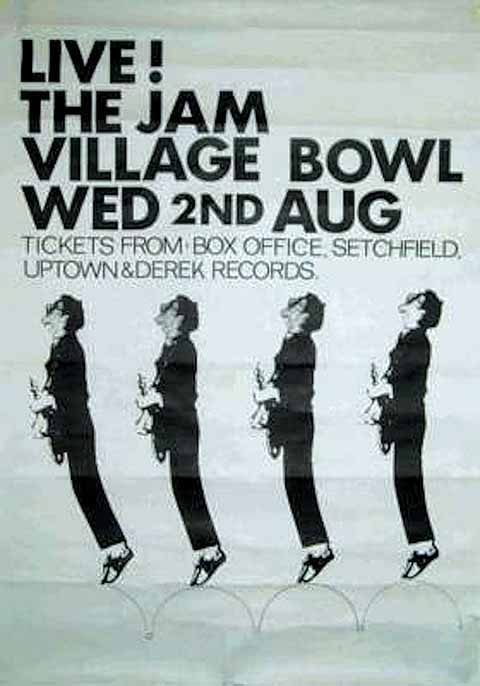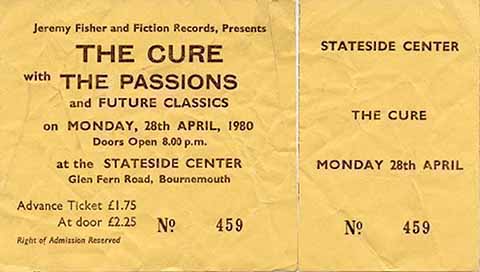Whatever Happened To… Chelsea Village
Nick Churchill looks back at when Bournemouth was a hub for disco and punk
Published in September ’19

This unsent postcard of the Grand Hotel dates from after World War 2. This view of the south front is from what is now Glen Fern Road and shows the stream-fed fountain on the lawn. The two-storey brick and glass annexe on the left was added after the War, an untidy foreshadowing of the cement and glass buildings that would replace the hotel. Credit: flickr.com_AlwynLadell
Unlike many a fondly remembered music venue – tiny, tight and likely to overheat – Bournemouth’s Chelsea Village was the bee’s knees, the height of sophistication. When it opened in 1969, it was like nothing the town had seen before and within weeks it became a magnet for revellers from miles around. ‘We thought we were on Top of the Pops with podiums to dance on, it was really trendy,’ says Vanessa Miller, who was there on opening night. ‘I used to work in a shoe shop in Boscombe and the boys from the information bureau in the Arcade used to give free tickets to me and my friend to go to first nights and new clubs. We loved it and went there most weekends for years. I met my husband, Ashley, there when he was a DJ.’
The Village opened in 1969 in the space vacated by the Top Rank bowling alley, part of the redevelopment of the former Grand Hotel site on the new Glen Fern Road, which was re-purposed from the Grand’s former service road. In its pomp, before the War, the Grand comprised 91 bedrooms and 30 staff rooms, but it closed in 1960 and was demolished two years later.
Entry was on the ground floor with three venues located downstairs: the Village Bowl concert theatre, the Village disco, where future BBC Radio 1 star Andy Peebles was resident DJ, and the Inner Village (later known as Sneaky Pete’s), a lounge bar used for private parties and after-show gatherings for performers. ‘It was way ahead of its time,’ says Andy Freeman, who as Andy St John was house DJ in the Village from 1973 until the complex changed its name to the Stateside Centre in 1980. ‘Before Chelsea Village, all we’d seen in Bournemouth were small disco clubs like Samantha’s and Whiskey’s. Bands played in the Winter Gardens or the Hive, which was a tiny venue in a hotel where the BIC is now.’
With its 1500 capacity, the Village Bowl could host major stars and welcomed the likes of David Bowie, Genesis, Curtis Mayfield, the Kinks, Slade, Fairport Convention, Kraftwerk, the Clash, the Jam and many others who appeared initially in the Village as they paid their dues on the pot-holed path to stardom. It even earned a footnote in rock history as one of the venues forced to cancel the Sex Pistols on the ‘Anarchy in the UK’ tour amid the furore whipped up by the infamous Bill Grundy interview in which, goaded by the presenter, the band treated the audience to what the Daily Mirror deemed ‘the filthiest language heard on British television’. Andy remembers: ‘We took the phone call from the chairman of Top Rank. All he said was ‘Sex Pistols. You’re not having those in that venue,’ and slammed the phone down.’

Andy ‘St John’ Freeman (on the right) with fellow Village DJ Clive Dearsley (centre) and radio DJ Nicky Horne (left) in Chelsea Village, mid-1970s

A poster advertising The Clash’s Sort It Out Tour at the Village Bowl on 22 November 1978 with The Slits and The Innocents, their second show at the venue in a fortnight having previously played there on 9 November
Unperturbed, a few months later Andy had a ringside seat on 20 May 1977 as Blondie, supported by Squeeze, played their first European show at the Village Bowl. As the anecdotes flow, he recalls trying to charge punk princess Siouxsie Sioux to get into her own gig (‘I didn’t know who she was’); Queen singer Freddie Mercury hot-footing it over from the Winter Gardens to turn up in the Inner Village at an after-hours party for Hot Chocolate; and the student who ran the burger bar who turned out to be part of David Bowie’s road crew and got them all tickets to a post-show party at the Roundhouse Hotel.
‘It didn’t matter if it was the weekend party crowd out for a good night after a long week at work, or a thousand fans come to see a band, there always seemed to be a great atmosphere in Chelsea Village,’ says Andy. ‘There was hardly ever any trouble and the bouncers were good people, not thugs – people used to come just to see them.’
Vanessa nods in agreement: ‘We saw a few bands, but the Village was really just the place we used to go on a Friday and Saturday night. They used to give out tickets and a free bottle of Pomagne – a sort of poor man’s champagne made from cider – when it was someone’s birthday. I think some of us had a birthday every six weeks or so in those days.’

The Village as it is today. The Bournemouth Development Company has earmarked the Glen Fern site for new housing and car parking.
After 1971, Chelsea Village had a fierce fight on its hands for Bournemouth’s party pound with competition opening next door in the shape of Le Cardinal, a nightclub with a U-shaped dance floor, and the Maison Royale cabaret restaurant, with its entrance on Fir Vale Road, hosting shows by the likes of Cliff Richard, Matt Munro, Roy Castle, Frankie Howerd and Vera Lynn. The stakes were raised when Jimmy Savile was hired by Maison Royale as a consultant. ‘He was horrible – he wanted us closed down,’ recalls Andy. ‘I remember one time we came out and he was sat there with the managers, who were all fine to us usually, and he started shouting and swearing at us that we were taking the bread out of his mouth. He was a nasty piece of work.’

top A ticket for this year’s Glastonbury headliners, The Cure, but for 39 years ago at the Stateside Center (sic) on 28 April 1980. Above A rare ticket to the ill-fated ‘Anarchy in the UK’ tour date at the Village Bowl. Billed as a ‘Punk Rock Extravaganza’, it was to have been headlined by the Sex Pistols with support ‘from the USA’ Johnny Thunder and the New York Dolls (sic, actually Johnny Thunders and the Heartbreakers), The Damned and The Clash.
Inevitably, though, fashions change and audiences move on. By 1982 live music and discos in the Village had gone as the venue reverted to tenpin bowling and, despite Savile’s presence, the Maison complex shut down in 1983. Its two venues are currently known as Cameo and Myu. Laser Quest and Oasis Fun now occupy Chelsea Village. The entire Glen Fern site is earmarked for improvement. ‘I hadn’t been down there for years,’ says Vanessa Miller, ‘but I found myself in Laser Quest with my grand-daughter not long ago and all the memories came back. It still has the same feel and I’m sure the toilets are the same as when we went there. I was telling her that this was where her Gran used to come, and of course, she looked at me as if I was from another planet!’



